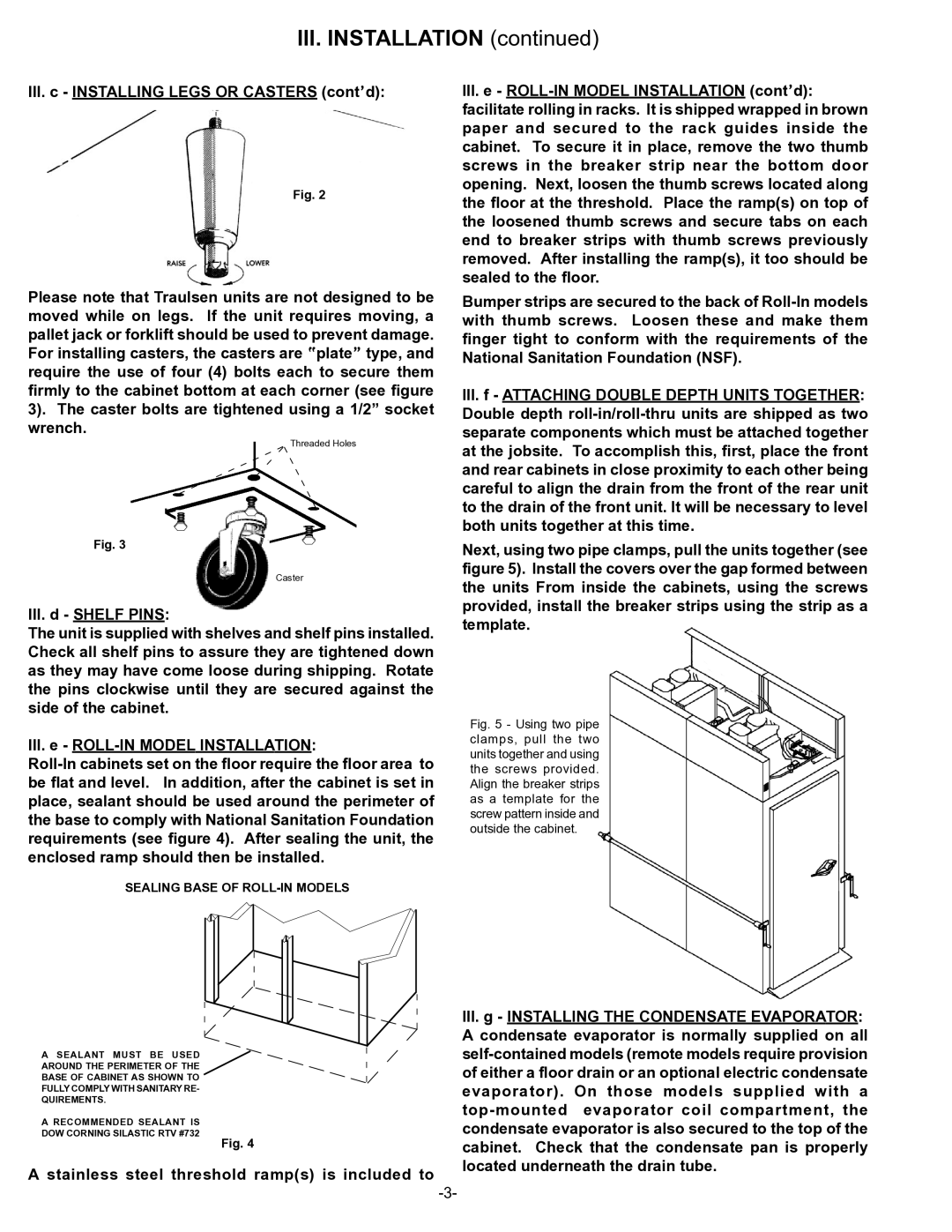
III. INSTALLATION (continued)
III.c - INSTALLING LEGS OR CASTERS (cont’d):
Fig. 2
Please note that Traulsen units are not designed to be moved while on legs. If the unit requires moving, a pallet jack or forklift should be used to prevent damage. For installing casters, the casters are “plate” type, and require the use of four (4) bolts each to secure them firmly to the cabinet bottom at each corner (see figure 3). The caster bolts are tightened using a 1/2” socket wrench.
Threaded Holes
Fig. 3
Caster
III.d - SHELF PINS:
The unit is supplied with shelves and shelf pins installed. Check all shelf pins to assure they are tightened down as they may have come loose during shipping. Rotate the pins clockwise until they are secured against the side of the cabinet.
III.e -
III.e -
Bumper strips are secured to the back of
III.f - ATTACHING DOUBLE DEPTH UNITS TOGETHER: Double depth
Next, using two pipe clamps, pull the units together (see figure 5). Install the covers over the gap formed between the units From inside the cabinets, using the screws provided, install the breaker strips using the strip as a template.
Fig. 5 - Using two pipe clamps, pull the two units together and using the screws provided. Align the breaker strips as a template for the screw pattern inside and outside the cabinet.
SEALING BASE OF ROLL-IN MODELS
A SEALANT MUST BE USED
AROUND THE PERIMETER OF THE
BASE OF CABINET AS SHOWN TO
FULLY COMPLY WITH SANITARY RE-
QUIREMENTS.
A RECOMMENDED SEALANT IS
DOW CORNING SILASTIC RTV #732
Fig. 4
A stainless steel threshold ramp(s) is included to
III.g - INSTALLING THE CONDENSATE EVAPORATOR: A condensate evaporator is normally supplied on all
